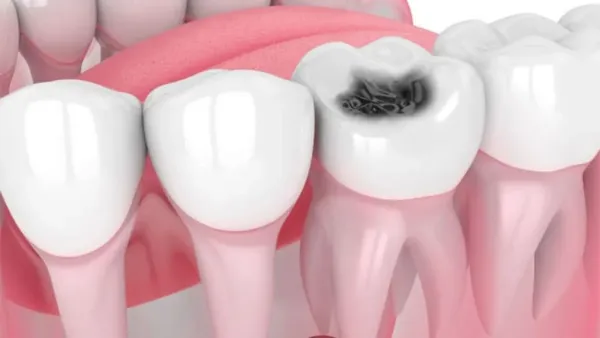
Tooth cavities, also referred to as dental caries or tooth decay, are tiny holes that progressively enlarge in your teeth. This is brought on by oral bacteria that feed on sugar and refined carbohydrates and produce acid, which may harm the teeth’s enamel, the outer hard covering. Tooth cavities are becoming a bigger concern every day these days. Everyone, from kids to adults, is having trouble with this issue. Actually, cavities may occur for a variety of causes. excessive intake of sweets, bacterial infections in the mouth, dirty teeth, or any other health issue. Long-term tooth decay is caused by cavities in the teeth.

Usually, as soon as you notice a toothache starting, you schedule an appointment with your dentist. While you wait, there are remedies you may try at home to help ease the discomfort. Garlic is one such remedy.
Why is garlic effective in treating cavities?
Although garlic has long been praised for its therapeutic qualities, it may be more often linked to Italian cooking than to the treatment of toothaches. Allicin, one of the most well-known ingredients in garlic, has antibacterial and antimicrobial properties. reliable source for eradicating some of the toothache-causing bacteria. Freshly crushed or sliced garlic contains allicin.
Can a toothache be relieved by using garlic powder?
You may be tempted to use garlic powder to treat your toothache if you don’t have any fresh garlic on hand. However, since garlic powder does not contain allicin, it is unable to alleviate toothaches. Whole garlic does not contain allicin; instead, it is created when the cloves are broken up, chewed, minced, or sliced, and it is only present for a brief period of time.
How can a tooth cavity be treated with garlic?
Eat a clove of garlic.
Gently chew a peeled clove of garlic with the broken tooth. Allicin, which is produced in this way, kills any germs that could be causing your discomfort.
Let the clove rest on the teeth after chewing.
Make a paste.
Using a mortar or the back of a spoon, crush the garlic and add a little pinch of salt, which has antibacterial properties and may help reduce inflammation.
Using your fingers or a cotton swab, apply the mixture to the afflicted tooth.